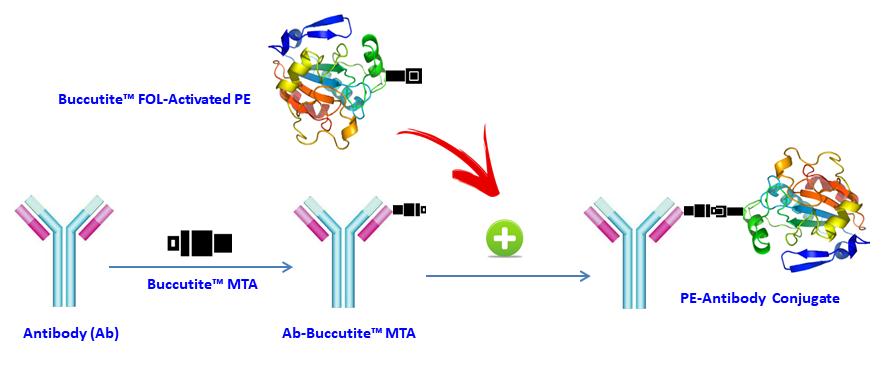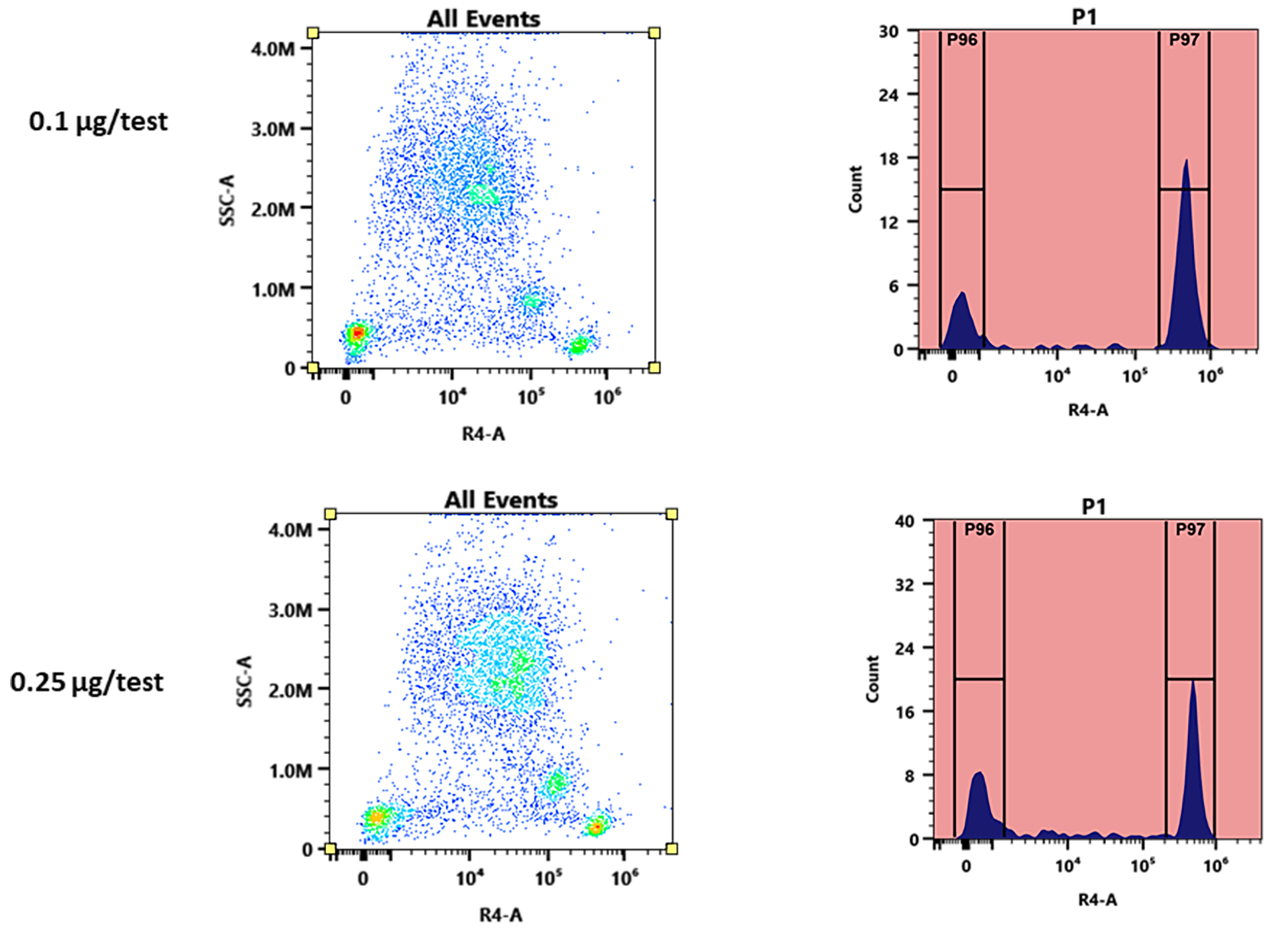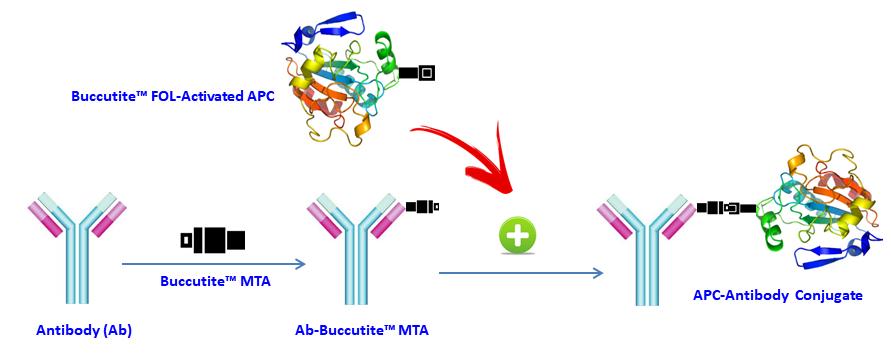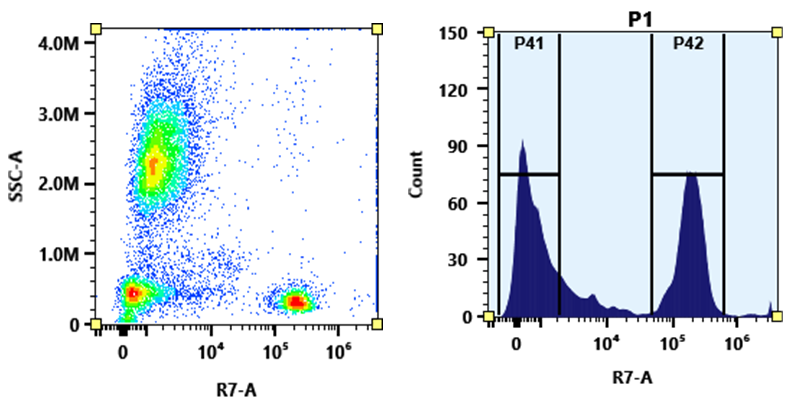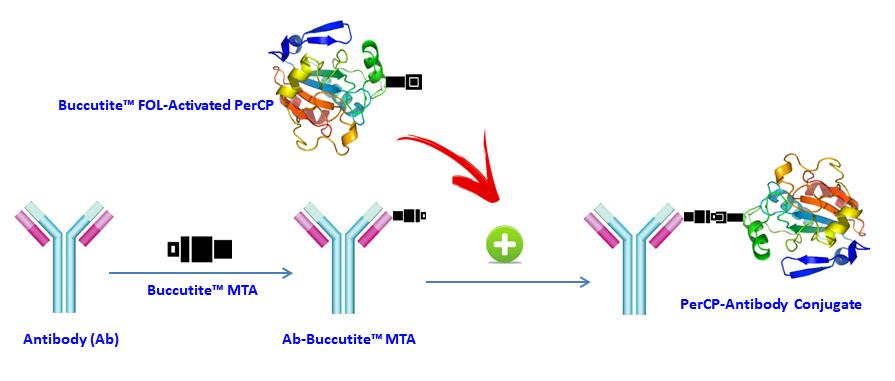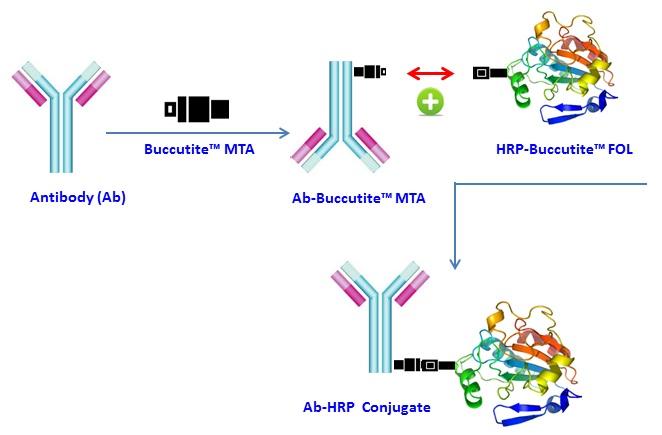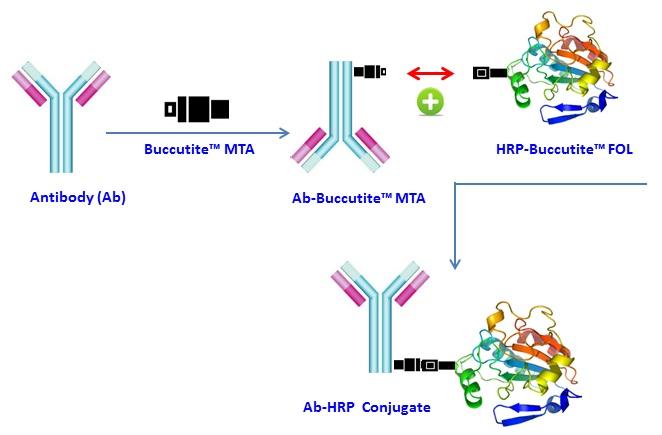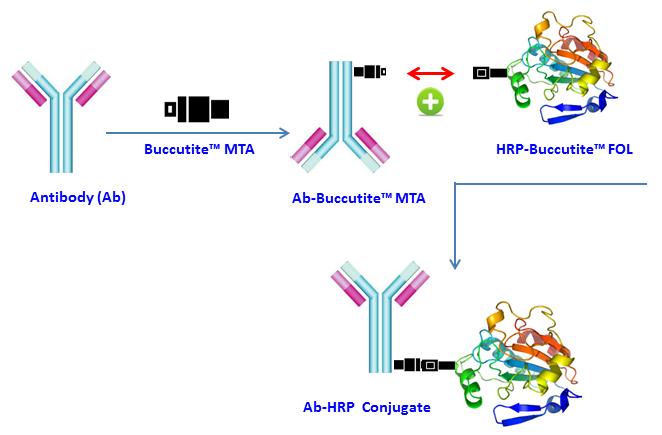上海金畔生物科技有限公司代理AAT Bioquest荧光染料全线产品,欢迎访问AAT Bioquest荧光染料官网了解更多信息。
抗体标记试剂盒 Buccutite PE-Cy7 标记25ug抗体价格 4245
产品规格
产品货号
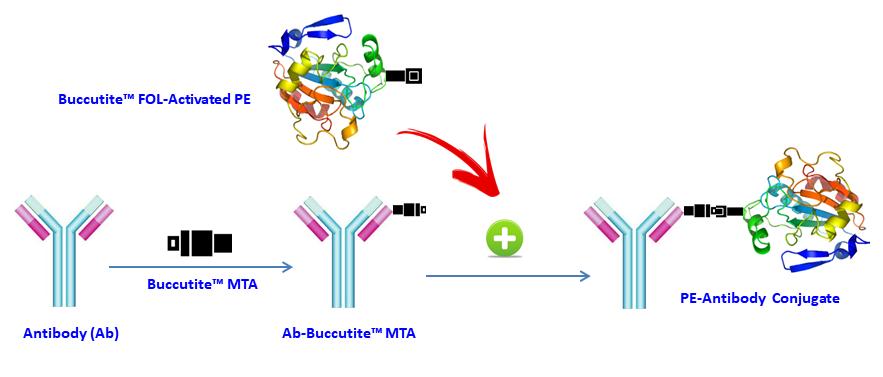
| Ex (nm) | 565 | Em (nm) | 778 |
| 分子量 | – | 溶剂 | DMSO |
| 存储条件 | 在2-8度冷藏保存, 避免光照 |
Buccutite PE-Cy7抗体标记试剂盒提供了一种以微观方式标记抗体的 便捷方法。PE-Cy7是流式细胞术中常用的颜色。其主要吸收峰位于565nm,发射峰位于~780nm。 AAT Bioquest提供这种Buccutite 快速标记试剂盒,以促进PE-Cy7串联结合抗体和其他蛋白质,如链霉抗生物素蛋白和其他二级试剂。 Buccutite PE-Cy7共轭试剂盒为您的抗体与PE结合提供了一种强大而方便的方法。该试剂盒包括预活化的PE和反应缓冲液。整个过程仅需要两次简单的混合,无需进一步纯化。缀合的抗体可用于WB,ELISA和IHC应用。该试剂盒足以进行2次标记反应,每次反应 多25μg抗体。考虑到PE的大尺寸(240kDa),标记反应中使用的抗体量必须小于PE的量。任何新抗体试剂的 比例必须通过实验确定,但每50μgPE使用25μgIgG抗体通常可获得结果。我们的试剂盒提供预活化的PE-Cy7,以促进PE-Cy7串联结合抗体和其他蛋白质,如链霉抗生物素蛋白和其他二级试剂。我们的预活化PE-Cy7串联已准备好结合,产生比常规繁琐的基于SMCC的缀合化学高得多的产率。此外,我们的预活化PE-Cy7串联通过其蛋白质丰富的氨基与蛋白质缀合,而SMCC化学靶向必须通过抗体还原而再生的硫醇基团。Buccutite PE-Cy7抗体标记试剂盒是美国AAT Bioquest研发的产品。
点击查看光谱
实验方案
操作步骤
1.运行Antibody-Buccutite MTA反应
1.1将抗体溶液直接加入到Buccutite MTA(组分B)的小瓶中,并通过反复移液几次将其充分混合或将小瓶涡旋几秒钟。
1.2将抗体-Buccutite MTA反应混合物在室温下保持30-60分钟。 注意:如果需要,抗体-Buccutite MTA反应混合物可以旋转或摇动更长时间。
2.制备抗体-PE-Cy7缀合物
2.1通过向Buccutite FOL活化的PE-Cy7(组分A)的小瓶中加入50μLddH2O制备Buccutite FOL活化的PE-Cy7溶液,通过反复移液几次充分混合或将小瓶涡旋几秒钟。
2.2将整瓶Buccutite FOL活化的PE-Cy7溶液混合到纯化的抗体-Buccutite MTA溶液(来自步骤纯化抗体-Buccutite MTA溶液)中,充分混合并在室温下旋转混合物1小时。
2.3抗体-PE-Cy7结合物现在可以使用了。 注意:立即使用时,抗体-PE-Cy7结合物需要用您选择的缓冲液稀释。 注意:对于长期储存,需要浓缩或冷冻干燥抗体-PE-Cy7结合物溶液。
3.抗体-PE-Cy7共轭物的储存
抗体缀合物应在载体抗体(例如0.1%牛血清白蛋白)存在下以> 0.5mg / mL储存。 当在2mM叠氮化钠存在下储存并避光时,抗体-PE-Cy7缀合物溶液可以在4℃下储存两个月而没有显着变化。 对于更长时间的储存,可以将抗体-PE-Cy7缀合物冻干并在≤-20℃下储存。
参考文献
Chromophore attachment to phycobiliprotein beta-subunits: phycocyanobilin:cysteine-beta84 phycobiliprotein lyase activity of CpeS-like protein from Anabaena Sp. PCC7120
Authors: Zhao KH, Su P, Li J, Tu JM, Zhou M, Bubenzer C, Scheer H.
Journal: J Biol Chem (2006): 8573
Excitation energy transfer from phycobiliprotein to chlorophyll d in intact cells of Acaryochloris marina studied by time- and wavelength-resolved fluorescence spectroscopy
Authors: Petrasek Z, Schmitt FJ, Theiss C, Huyer J, Chen M, Larkum A, Eichler HJ, Kemnitz K, Eckert HJ.
Journal: Photochem Photobiol Sci (2005): 1016
Single-molecule spectroscopy selectively probes donor and acceptor chromophores in the phycobiliprotein allophycocyanin
Authors: Loos D, Cotlet M, De Schryver F, Habuchi S, Hofkens J.
Journal: Biophys J (2004): 2598
Evaluation of Tolypothrix germplasm for phycobiliprotein content
Authors: Prasanna R, Prasanna BM, Mohammadi SA, Singh PK.
Journal: Folia Microbiol (Praha) (2003): 59
Isolation and characterisation of phycobiliprotein rich mutant of cyanobacterium Synechocystis sp
Authors: Prasanna R, Dhar DW, Dominic TK, Tiwari ON, Singh PK.
Journal: Acta Biol Hung (2003): 113
Co-ordinated expression of phycobiliprotein operons in the chromatically adapting cyanobacterium Calothrix PCC 7601: a role for RcaD and RcaG
Authors: Noubir S, Luque I, Ochoa de Alda JA, Perewoska I, Tandeau de Marsac N, Cobley JG, Houmard J.
Journal: Mol Microbiol (2002): 749
Phycobiliprotein genes of the marine photosynthetic prokaryote Prochlorococcus: evidence for rapid evolution of genetic heterogeneity
Authors: Ting CS, Rocap G, King J, Chisholm SW.
Journal: Microbiology (2001): 3171
Novel activity of a phycobiliprotein lyase: both the attachment of phycocyanobilin and the isomerization to phycoviolobilin are catalyzed by the proteins PecE and PecF encoded by the phycoerythrocyanin operon
Authors: Zhao KH, Deng MG, Zheng M, Zhou M, Parbel A, Storf M, Meyer M, Strohmann B, Scheer H.
Journal: FEBS Lett (2000): 9
Phycobiliprotein-Fab conjugates as probes for single particle fluorescence imaging
Authors: Triantafilou K, Triantafilou M, Wilson KM.
Journal: Cytometry (2000): 226
[Phycobiliprotein and fluorescence immunological assay]
Authors: Wu P.
Journal: Sheng Li Ke Xue Jin Zhan (2000): 82
相关产品
| 产品名称 | 货号 |
| Buccutite PE-Cy7抗体标记试剂盒 标记100ug抗体 | Cat#1317 |
| Buccutite APC-Cy7抗体标记试剂盒 标记100ug抗体 | Cat#1321 |
| Buccutite APC-Cy7抗体标记试剂盒 标记25ug抗体 | Cat#1351 |

